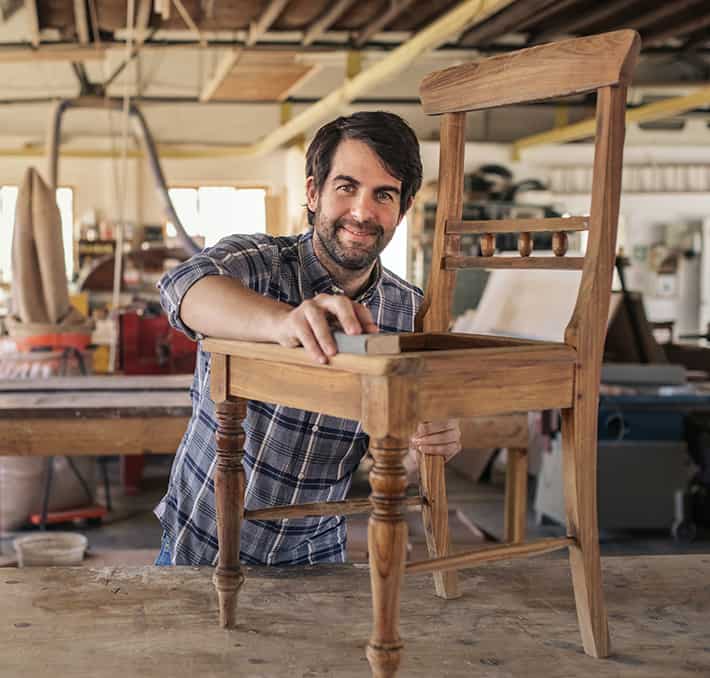
To advertise their products, furniture companies employ a variety of marketing methods, and tracking the outcomes can often be both challenging and time-consuming. Ecommerce key performance indicators (KPIs) are measurable benchmarks for retailers to track progress toward specific goals. They allow organizations to define targets and monitor outcomes. This data can then be used to make informed changes to the site’s layout, product offerings, descriptions, and checkout process to increase overall revenue.
Here’s what you should know about the top ecommerce KPIs every online furniture retailer should be measuring.
Cart abandonment refers to website users who add products to a virtual shopping cart but abandon it before making a purchase. Tracking this metric is critical because it can indicate whether there’s a disconnect between the shopping and checkout processes.
Truelist reports that the global average of abandoned carts is over 75%. Online retailers should care about cart abandonment because it’s expensive — costing them $18 billion annually.
What to do: There are several things you can do to reduce your cart abandonment rate. But, avoid making multiple changes at one time; you want to be able to gauge which tactic is the most effective at reducing cart abandonment.
Average order value (AOV) measures the average amount of revenue generated from each order in a given timespan. This metric influences important business decisions like the layout of your website and product pricing. By understanding AOV, furniture retailers can maximize each revenue opportunity.
What to do: Look for ways to improve your AOV by bundling products together, offering discounts for purchases over a certain amount. A few strategies to keep in mind:
The term “conversion rate” refers to the percentage of website users who execute a desired action. A furniture retailer’s desired action might be to fill out a contact form or to make a purchase outright.
Conversion rates are computed by dividing the total number of website users who convert by the total number of website visitors overall. Then, that number is reduced to a percentage. Conversion rates are a good tool for furniture retailers to compare and contrast the results of different advertising strategies.
What to do: Improving conversion rates is an ongoing endeavor for all retailers; the work truly never ends. To continue driving sales, furniture retailers should:
Customer lifetime value (CLV) refers to how much value a customer has added to a company over the course of their business relationship. Keeping existing customers costs less than acquiring new ones, so it’s important to maximize CLV.
To calculate your CLV, subtract the cost of acquiring and serving a customer from their overall lifetime revenue. Say your company sells $1,200 of new furniture to loyal customers every year and you keep customers for an average of five years. Your overall lifetime revenue per customer is $6,000. Say your CAC to acquire and keep a customer for five years is $1,500 in advertising, customer service, maintenance, etc. This equates to a net CLV of $4,500.
You should be mindful of your CLV compared to your CAC. If it costs more to acquire a customer than the value they are expected to provide over the lifetime of the relationship, your business may lose money.
What to do: Increase the lifetime value of each customer by creating additional sales opportunities. Here are a few tips:
A powerful advertising strategy for furniture retailers is email marketing. It’s vital to keep a consistent eye on your email subscriber lists. Tracking how many website users subscribe and unsubscribe after sending out an email helps you identify key issues.
A high unsubscribe rate suggests you’re targeting the wrong demographic. If more people subscribe to your email list after a blog post, you can assume the content in the blog resonated with your audience.
What to do: No company will have the exact same success with every type of marketing strategy. Here’s how to find out what works with your customers:
Anything that can be measured can be improved. But when it comes to ecommerce KPIs, furniture retailers need a system in place to capture all of the performance data around their operation. Many of the metrics covered in this article are collectible through simple website and social media analytics. However, it can be hard to track data from so many different channels, and basic analytics platforms may not help when it comes to providing actionable insight.
Staying on top of your data means choosing a technology partner that offers the tools you need for your retail store to succeed at measuring these top ecommerce KPIs.